A single day Spring Tour in North Norfolk today. It didn’t particularly feel like spring – it was foggy all day despite a fresh north wind, as the breeze blew in a thick ‘fret’ from the sea, although thankfully it wasn’t cold and it was dry! It didn’t appear particularly encouraging when we met up first thing this morning, but it is remarkable what you can see if you make the effort and get out looking.
The plan was to spend the first part of the morning at Stiffkey Fen, but with thick fog there as we passed, we continued on to Cley to make use of the hides. As we walked out along the boardwalk, the Reed Warblers were still singing away from the reeds and lots of Common Swifts were swooping around low over the hides looking for insects.
Despite the mist, we could still see out across the scrapes. Avocet Hide lived up to its name. There were several families of Avocets on here now, as more young have hatched in recent days. The juveniles were mostly being sheltered by their parents first thing this morning – hiding in the breast feathers of the adults as the latter rested down on their ‘knees’, looking like they had lots of extra legs!
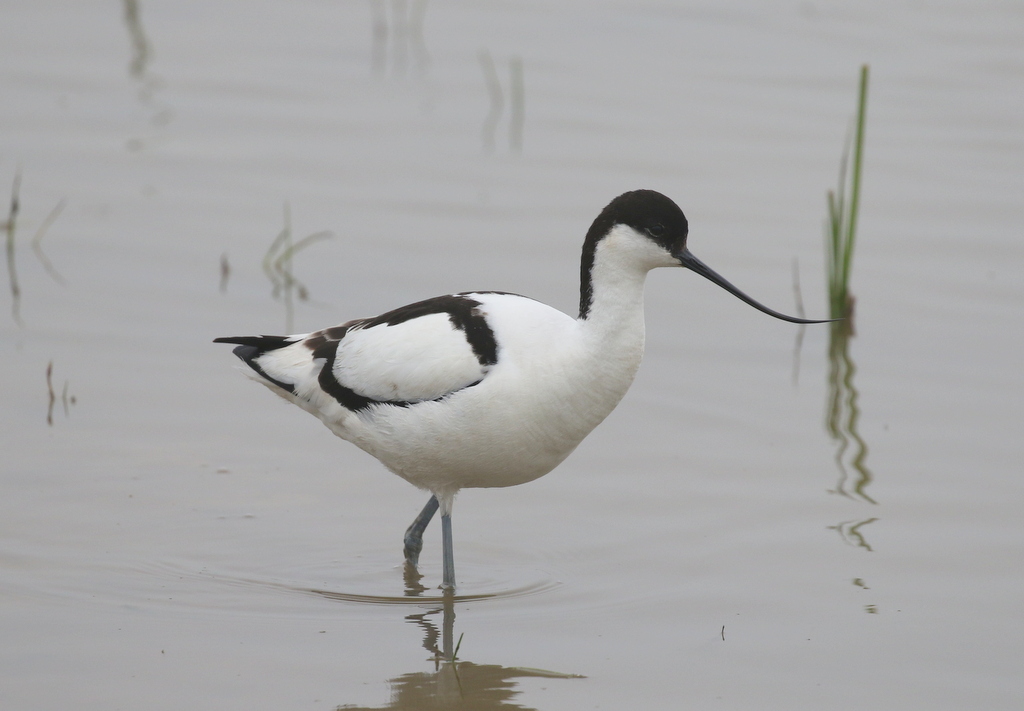
The Avocets do a particularly good job of chasing off most of the other waders at this time of year, so there was not much else on here today. There were a few Redshanks around, and one dropped in on the edge of the scrape right in front of the hide.
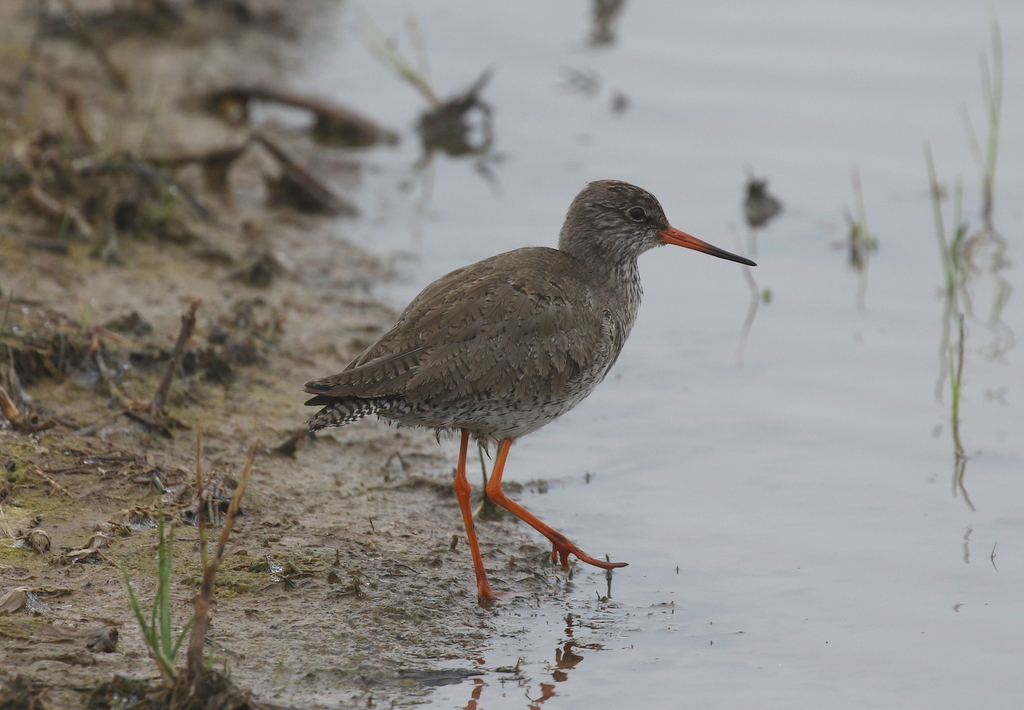
We thought there might be a few more waders on the other scrapes, so we headed round to Dauke’s Hide. Simmond’s Scrape was rather quiet, but looking across to Pat’s Pool the first wader we spotted was a Common Sandpiper bobbing its way along the back edge of the nearest island.
Lurking in the mist further back, we could see a Greenshank too – slightly bigger, sleeker, longer legged than the Redshanks surrounding it. A single summer plumage Dunlin, sporting a black belly patch, dropped into the middle of the scrape briefly before taking off and flying over to Simmond’s where we got a better look at it. A small group of Black-tailed Godwits took off and flew away, back over the reeds. A Little Ringed Plover disappeared off into the fog too.
This is not really the season for wildfowl, but there was a nice selection of ducks here today. A group of Shoveler were lurking at the back of Simmond’s Scrape and there were several Shelduck, Gadwall and families of Mallard ducklings around the pools. A pair of Tufted Duck were diving in the channel right in front of the hide.
But a single drake Wigeon on the bank on the side of Whitwell Scrape and two Teal on Simmond’s were more of a surprise. Both mainly winter visitors, the majority have long since left for the breeding season further north, leaving just a few stragglers behind. A pair of Mute Swans shepherded there nine cygnets past the front of the hide too.
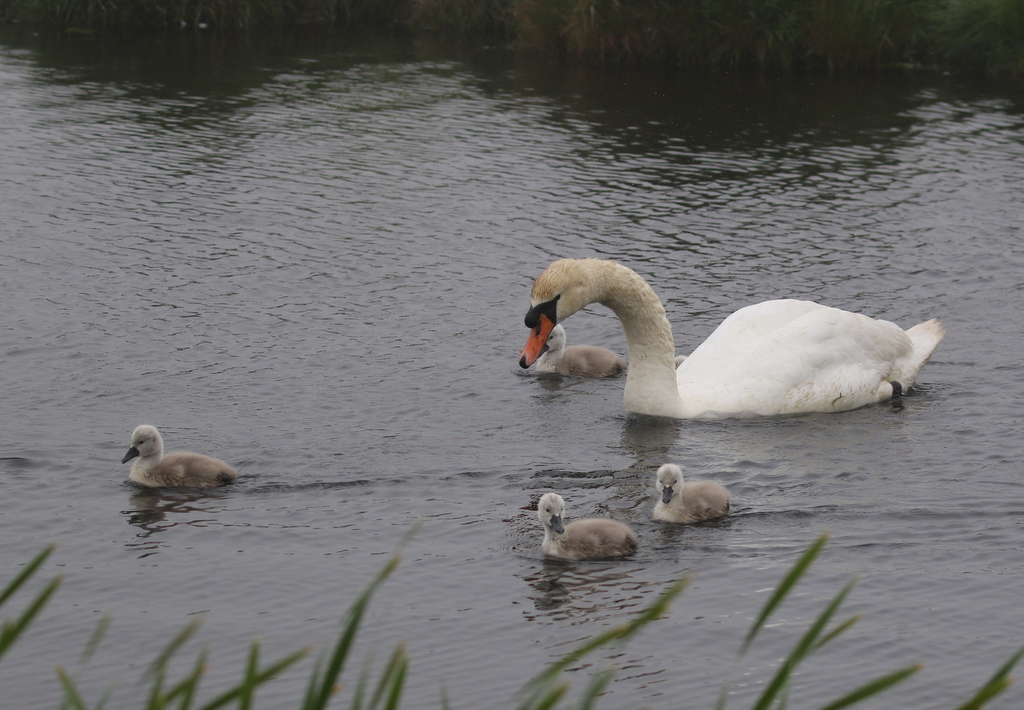
A female Marsh Harrier did a couple of low passes right over the hide and out over the scrapes, causing pandemonium among the waders. It was pursued by a large mob of angry Avocets, which chased it off back to the reedbed beyond. There were lots of Sand Martins out here too, chasing round low over the water in front of the hide. Finding flying insects was probably more tricky than usual today, given the weather.
It was a very productive hour or so in the hides, so we headed back to the visitor centre. The fog seemed to have lifted a bit, so we decided to walk out along the East Bank next. There were a couple of Common Pochard on Snipe’s Marsh and a Kestrel was hovering over the grass over by the road. A Grey Heron dropped out of the trees and down into the ditch on the edge of the reedbed. The Mute Swans on Don’s Pool were still on the nest – they seem to be a little behind the others.
About half way along the bank, we bumped into another birder who told us that the Temminck’s Stints were still on the north end of the Serpentine and showing well just below the bank. So we hurried up for a look and sure enough, there they were, two Temminck’s Stints. They were creeping around the clumps of grass on the near edge of the mud, just beyond the reeds at first, but they were rather jumpy and kept flying out to the water’s edge, where we could get a better look at them through the scope.


Temminck’s Stints are rather scarce spring migrants through here, stopping off on their way from Africa to their breeding grounds in Scandinavia, so always a good bird to see. Even though they were a bit muddy, we could see their distinctive yellowish legs. Temminck’s Stints acquire a rather variable number of contrastingly dark-centred feathers in their upperparts in summer and it was interesting to see the differences between these two individuals.
As we were hurrying up to see the Temminck’s Stints, a Spoonbill had flown in over the reedbed and dropped down onto the north end of the Serpentine too. It had taken rather a backseat to the stints at first, but having had a good look at the stints we then turned our attention back to it.
It is always nice to see a Spoonbill busy feeding, rather than asleep, and it was vigorously sweeping its bill side to side through the water. It seemed to be catching quite a lot too, as every so often it would flick its head up. We could then see the yellow tip to its bill. It had a bushy crest and a mustard brown wash on its breast, all pointing it out as an adult in breeding condition. Eventually it walked up onto the grass beyond the water and then flew off back into the fog.

There was a Little Egret on the north end of the Serpentine too, and another lingering drake Wigeon. There were still a few Lapwings and Redshanks out around the grazing marsh. Looking back into the murk on Pope’s Pool, we could see a young Great Black-backed Gull with the loafing Cormorants.
We could hear lots of Sandwich Terns calling out on Arnold’s so we made our way up there next and from the hide we could see them lined up out on one of the shingle spits, although it was hard to make out their yellow bill tips in the mist. A small group of Sandwich Terns flew past calling, with a single smaller Common Tern in with them.
There were a few waders hiding in the saltmarsh vegetation down towards the front. As well as the regular Redshanks and Oystercatchers, we picked out a single Ringed Plover and a smart breeding plumaged Turnstone. A pair of Little Ringed Plovers were on a sandier strip closer to us, and we could even see their golden-yellow eye rings.
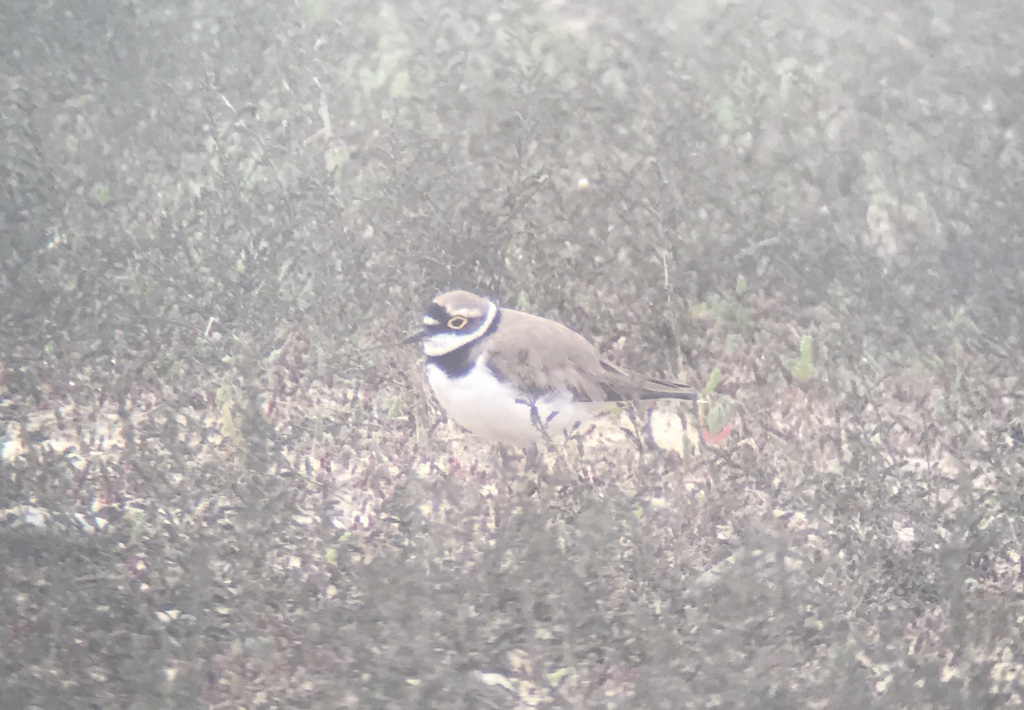
Walking on up to the beach, we could only just see the edge of the sea and there was nothing doing offshore, so we started to make our way back. Just past the hide, someone shouted as a Hobby emerged from the mist and flew past over our heads. Apparently it had just flushed all the waders, including the Temminck’s Stints, so our timing this morning had been lucky!
We had a quick look in at Iron Road next. There had been a Wood Sandpiper here yesterday, though it was apparently rather mobile. There was no sign of it on the pool by the track or from Babcock Hide today, and we had not seen it from the East Bank earlier, so it had possibly moved on. A male Reed Bunting posed nicely by Iron Road.
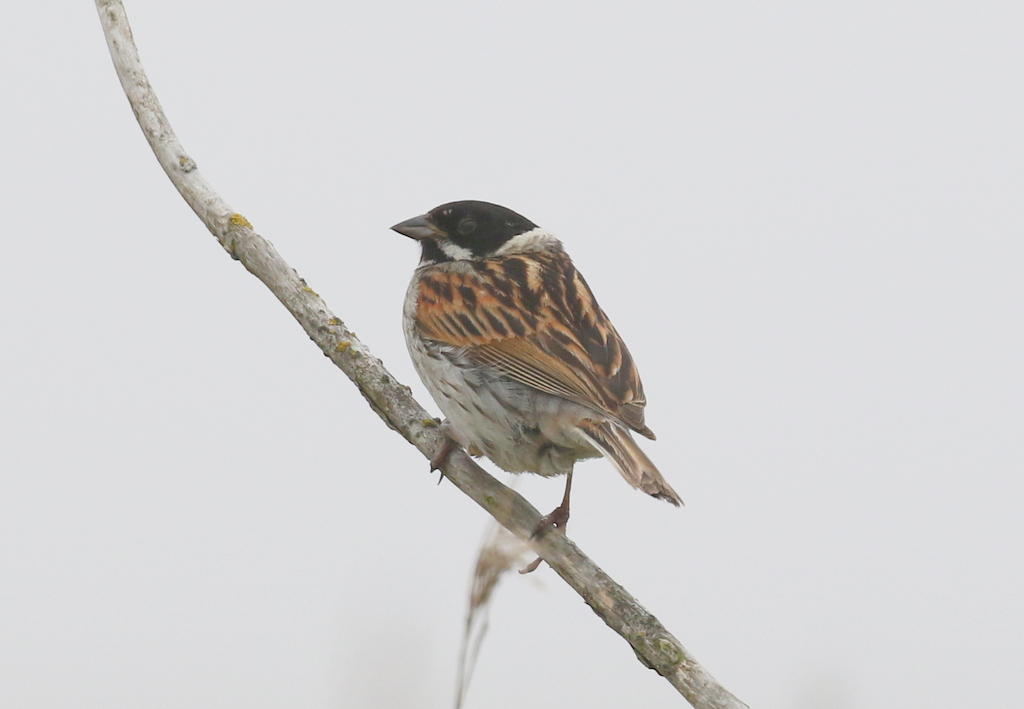
There were a few geese around the marshes and fields here – mostly Greylags but a few Canada and Egyptian Geese were useful additions to the day’s list. There was not much else on Watling Water today – the Avocets still have one juvenile and seem to be doing a good job of chasing the other waders off!
With the breeze coming in off the sea, we had our lunch in the beach shelter at Cley, looking out over the Eye Field. A Silver Y moth flew in to the shelter and proceeded to try to rest on one of our rucksacks and then on someone’s shoe! We moved it carefully onto the wall of the shelter. This is a migrant moth, coming up in variable numbers to the UK from further south into Europe each year, so it would be really interesting to know how far this individual had come to get here.
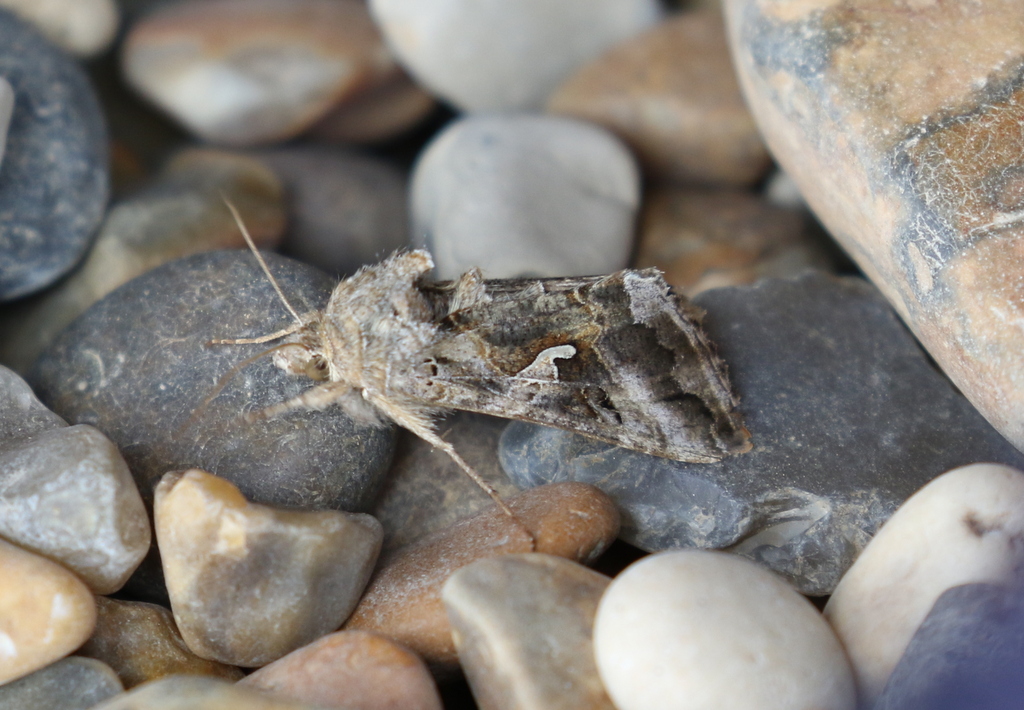
After lunch, we headed back along the coast to Stiffkey Fen. A Yellowhammer flew over the road and dropped into the field the other side and a Common Whitethroat was signing and display flighting from the hedge as we got out of the car. As we got out our bags, we discovered that the Silver Y moth had somehow managed to stow away on one of them – a different way to continue its migration – so we placed it carefully in the hedge.
The meadow across the road is starting to look stunning, now that the poppies are coming into bloom. There were a few Stock Doves flying round over the field and a couple of Brown Hares lurking in the long grass amongst the flowers. A Marsh Harrier passed over the back.
As we got down to the copse on the corner, we could hear more birds singing – Blackcap, Chiffchaff, Wren and Chaffinch, and a quick burst of Goldcrest too. We got a quick look at a Blackcap in the willows the other side of the road, but the Garden Warbler which sang briefly in the bushes was much more elusive. We could hear the delicate piping of a pair of Bullfinches in the trees too.
Looking across to the Fen from the path, over the brambles, we could see a Common Sandpiper working its way along the edge of one of the islands out in the middle. But by the time we got up onto the seawall, it had disappeared. There were a couple of Little Ringed Plovers on here too, and plenty of Avocets still.
It was low tide now and the harbour channel was mostly mud – much to the delight of the Redshanks, Oystercatchers and Avocets. We walked round to see if we could see much in the harbour, but a combination of the tide being out and the fog meant that we were frustrated. A small group of Linnets were hanging around the bushes on the corner. We headed back to the car, where a female Marsh Harrier did a very nice flypast.
Holkham offered the option of hides and some protection from the fog in the shelter of the trees, so we headed around there for the remainder of the afternoon. We parked at Lady Anne’s Drive and walked west. It was the middle of the afternoon now, and there were just a few birds singing – Blackcap, Chiffchaff and one or two Reed Warblers.
With limited time, we made our way quickly along to Joe Jordan Hide. We did manage to pick up a few tits in the trees on the way – several family parties now of Long-tailed Tits and a couple of Coal Tits in the pines.
There was a steady procession of Spoonbills in and out of the trees from the hide. Some birds were flying in over the grazing marshes, presumably returning from feeding along the coast. Several others dropped down to the edge of the pool to bathe and preen – at one point there were five Spoonbills gathered there together.
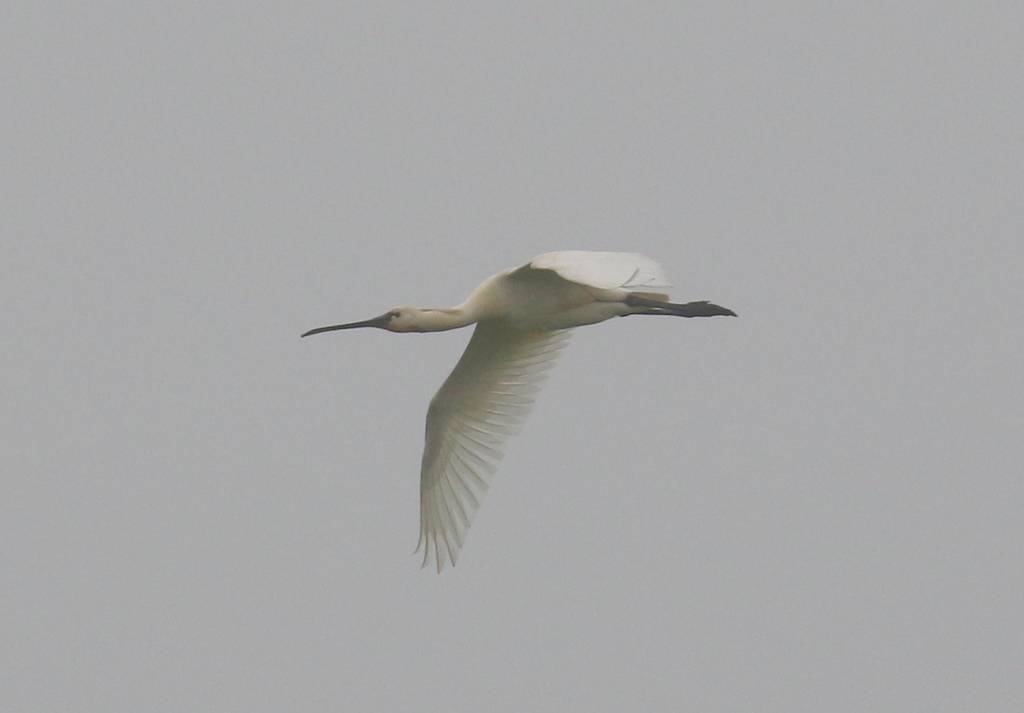
There were several Little Egrets flying in and out of the trees as well and we eventually managed to find a Great White Egret too. Despite its large size, it was remarkably hard to see at times in a ditch, but occasionally stuck its head up so we could see its long dagger-shaped yellow bill.
There are always several Marsh Harriers on show from here, but one male put on a particularly good show. It flew in across the grass in front of the hide and proceeded to circle round repeatedly over an area of taller rush clumps. It looked like it could see something in there but despite dropping down lower, it never actually made a move. Several Greylag Geese and a Brown Hare on the grass nearby looked on nervously, but we couldn’t see what was hiding down below.
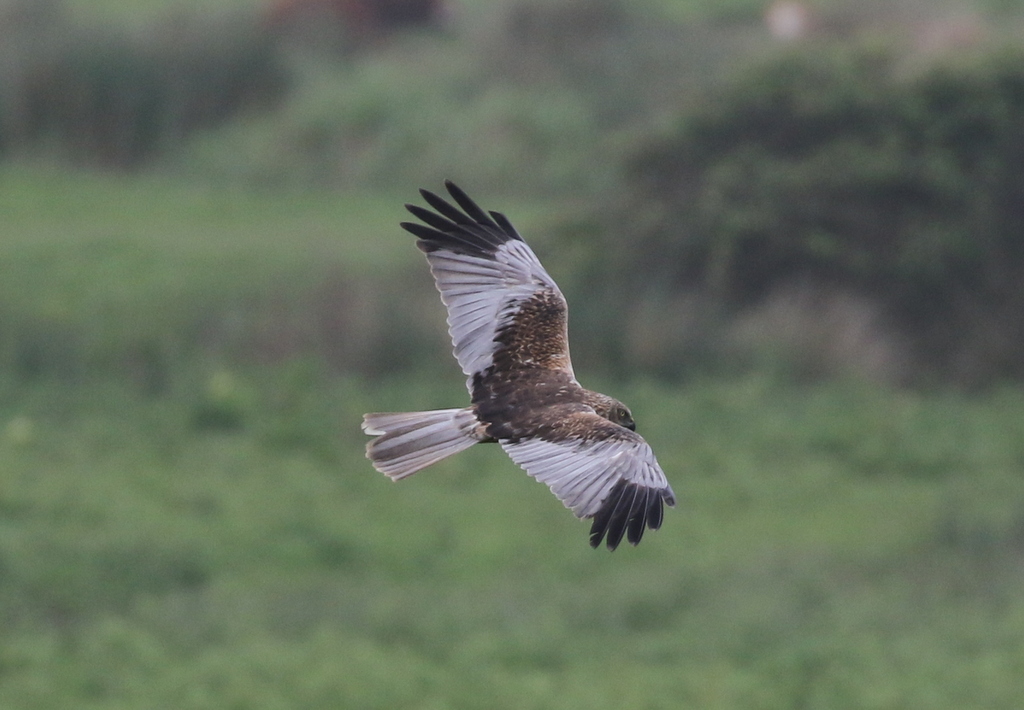
It was a nice way to end the day, sitting in the hide at Holkham watching the Spoonbills and Harriers. Despite the fog, we had enjoyed a great day out and seen a remarkable number of birds, and some good ones too. Nothing to fret about!
















